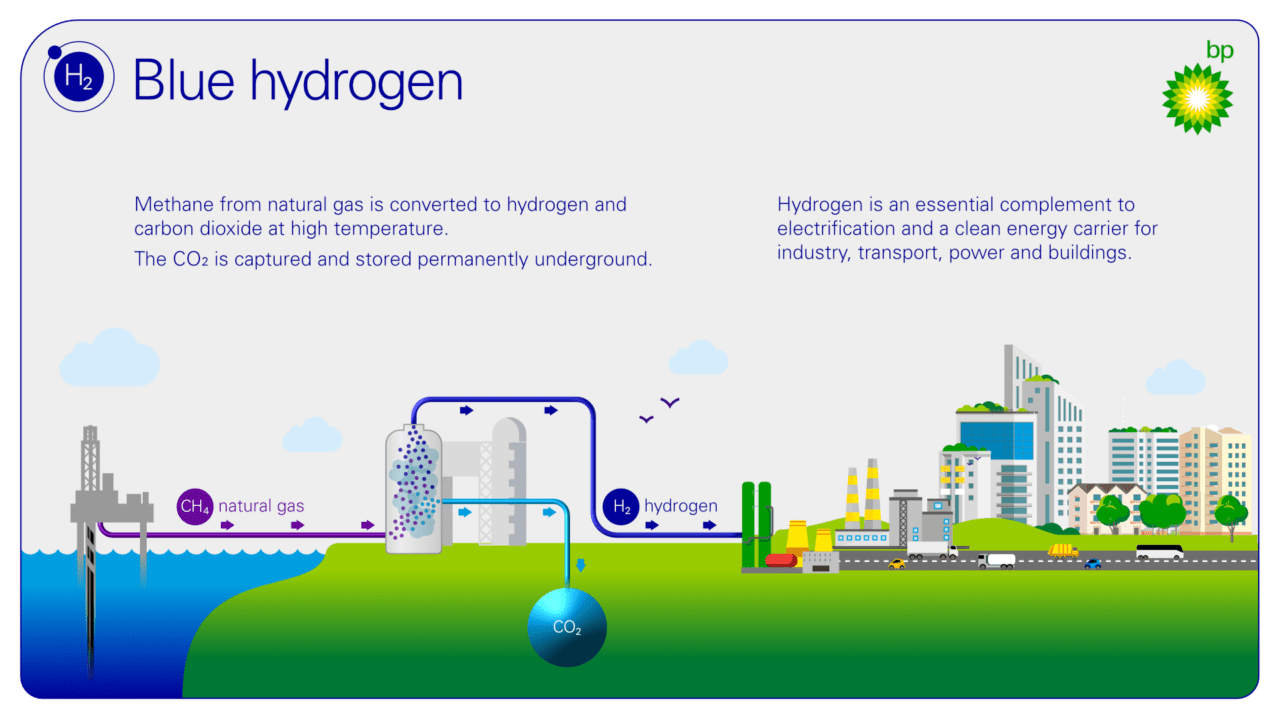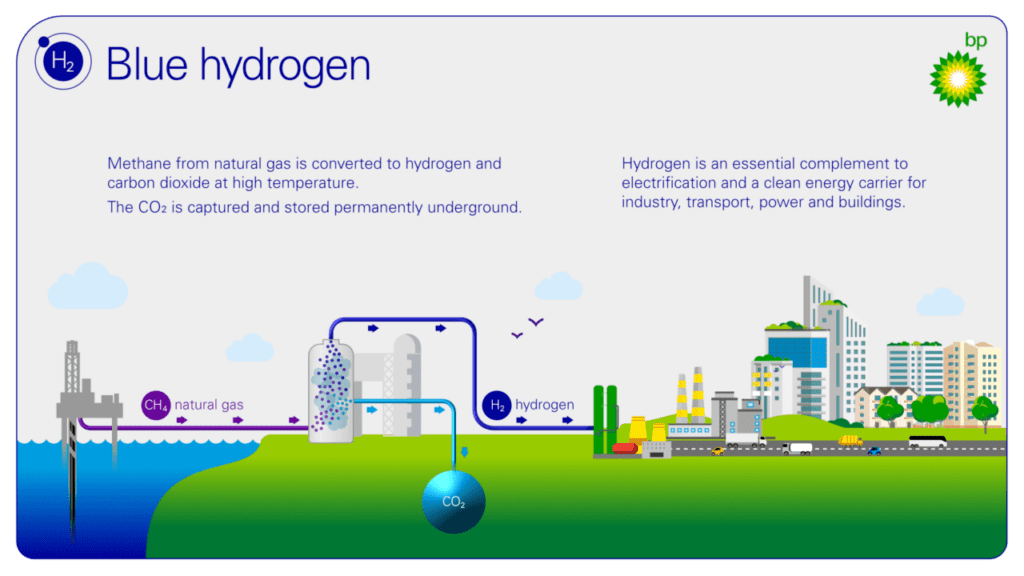The post BP Details Plan for UK’s Largest Hydrogen Project appeared first on POWER Magazine.

The global market for hydrogen development has taken another step forward, as oil and gas major BP announced it is studying development of what it said would be the UK’s largest blue hydrogen production facility.
BP on March 18 said the project, which would be sited on England’s northeast coast, is part of a plan to make the region a hydrogen production hub. The company initially is looking at a project that could grow to 1 GW of production capacity by 2030, at a plant that could produce about 260,000 metric tons of hydrogen annually when fully operational.
The announcement came one day after the UK government announced $ 238 million in funding for nine projects in five industrial areas. The projects would be part of the country’s decarbonization strategy, and would be focused on blue hydrogen and carbon capture and storage (CCS).
BP’s plan comes on the heels of Enegix Energy’s March 1 announcement that it plans to build what the company said would be the world’s largest green hydrogen plant, a facility in northeast Brazil that could produce more than 600 million kilograms, or about 1.32 billion pounds, of the fuel per year. Enegix on March 1 said the hydrogen production would come as part of its contract for 3.4 GW of combined wind and solar power through a partnership with Enerwind, an Italian wind turbine manufacturer.
That announcement came the same day as one from Siemens Energy, which said it has a plan to integrate hydrogen production and storage at a power plant in Utah. The U.S. Dept. of Energy on March 15 announced it was awarding $ 2 million to four projects aimed at the production of hydrogen from coal and biomass.
Major Piece of UK Strategy
BP said the proposed H2Teesside development announced Thursday “would be a significant step in developing BP’s hydrogen business and make a major contribution to the UK government’s target of developing 5 GW of hydrogen production by 2030.” BP said the plant could produce as much as 20% of the UK’s 2030 target for hydrogen.

BP also said it had a memorandum of understanding with Northern Gas Networks to work on introducing hydrogen into the UK’s gas system, with a goal of helping both industrial and residential customers to decarbonize via their gas connections. BP said it also has signed agreements to work with Venator, and Tees Valley Combined Authority, to develop an industrial hydrogen cluster and enable decarbonization of regional industries.
“Clean hydrogen is an essential complement to electrification on the path to net zero,” said Dev Sanyal, BP’s executive vice president of gas and low-carbon energy, in a statement. “Blue hydrogen, integrated with carbon capture and storage, can provide the scale and reliability needed by industrial processes. It can also play an essential role in decarbonizing hard-to-electrify industries and driving down the cost of the energy transition. H2Teesside, together with NZT [Net Zero Teesside] and NEP [Northern Endurance Partnership], has the potential to transform the area into one of the first carbon-neutral clusters in the UK, supporting thousands of jobs and enabling the UK’s Ten Point Plan.”
Blue hydrogen is derived from natural gas through the process of steam methane reforming. The emissions of CO2 from the process are captured, then typically stored underground using carbon capture, utilization, and storage (CCUS) technology, which leaves nearly pure hydrogen. Industry analysts have said that while blue hydrogen is not as “clean” as green hydrogen, which is produced from renewable resources and electrolyzers, blue hydrogen production is more cost-effective.
BP said the proposed location is close to North Sea storage sites, pipe corridors, and existing operational hydrogen storage and distribution capabilities. The company said Teesside’s industrial businesses account for more than 5% of the UK’s carbon emissions from the industrial sector, and noted the region is home to five of the country’s top 25 emitters.
Feasibility Study
BP is conducting a feasibility study for the Teesside project, and said it has targeted 2024 for a final investment decision. The company noted that “the facility will need some time for maintenance and will be producing as hydrogen demand occurs, so likely production levels will be lower.”
The company said it expects an initial 500 MW of blue hydrogen capacity will be deployed no later than 2027, with additional capacity coming online by 2030. It said the feasibility study in part is exploring technologies that could capture up to 98% of carbon emissions from the hydrogen production process.
Anne-Marie Trevelyan, the UK’s energy minister, in a statement said, “Driving the growth of low carbon hydrogen is a key part of the Prime Minister’s Ten Point Plan and our Energy White Paper and can play an important part in helping us end our contribution to climate change by 2050. Clean hydrogen has huge potential to help us fully decarbonize across the UK and it is great to see BP exploring its full potential on Teesside.”
The Teesside project is touted as a “full-chain CCS project,” and would include an 850-MW gas-fired power plant fitted with carbon capture, and an offshore CO2 transport and storage system. H2Teesside will integrate with NZT and the NEP CCUS project, with BP as the lead operator.
“The project’s hydrogen output could provide clean energy to industry and residential homes, be used as a fuel for heavy transport and support the creation of sustainable fuels, including bio and e-fuels,” the company said.
NGN CEO Mark Horsley said, “It’s fantastic to see BP planning to invest in hydrogen production at Teesside, placing our region at the forefront of a green recovery. Ahead of COP 26 [United Nations Climate Change Conference] in November, collaborations such as this demonstrate the scale of the ambition to meet the net zero challenge and support the UK’s transition to a zero-carbon energy system. We’re very excited to be working with BP to explore further the potential of a hydrogen gas network to play a lead role in industrial and domestic heat decarbonization.”
BP in a statement said the development of businesses in emerging technologies such as hydrogen and CCUS “is an integral part of BP’s strategy of transforming to an integrated energy company. Hydrogen is expected to play a critical role in decarbonizing the power, industrial and transport sectors, especially those that are hard- or expensive-to-electrify.”
BP and Ørsted last year agreed to work together to develop a project in Germany for industrial-scale production of green hydrogen. That deal is part of BP’s continuing move into low-carbon or renewable energy; the company in September 2020 announced a $ 1.1 billion deal to buy the U.S. offshore wind assets of Norway’s Equinor.
—Darrell Proctor is associate editor for POWER (@POWERmagazine).
The post BP Details Plan for UK’s Largest Hydrogen Project appeared first on POWER Magazine.